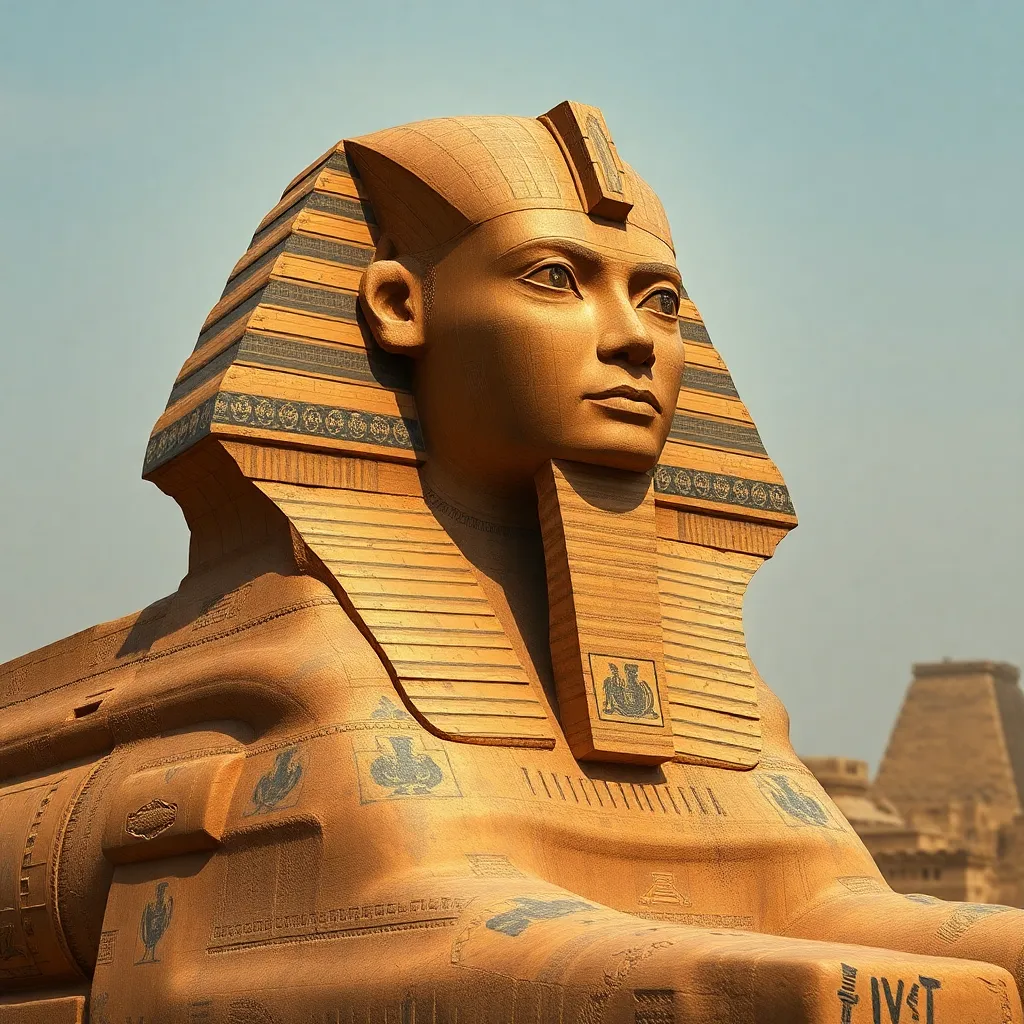The Sphinx and the Art of Riddles in Ancient Culture
I. Introduction
The Sphinx, a mythical creature with the body of a lion and the head of a human, holds a prominent place in ancient mythology, particularly within Egyptian and Greek traditions. It represents a complex intertwining of power, mystery, and knowledge.
Riddles, often associated with the Sphinx, played a significant role in ancient cultures, serving as a means to convey wisdom, challenge intellect, and entertain. This article explores the origins of the Sphinx, the nature of riddles, and their importance in both ancient and modern societies.
II. The Origins of the Sphinx
The Sphinx has its roots deeply embedded in the historical and cultural context of ancient Egypt. Initially, it was a symbol of strength and protection, often guarding the entrances to temples and tombs.
A. Historical and cultural context of the Sphinx in ancient Egypt
The Great Sphinx of Giza, built around 2500 BC, is one of the most iconic monuments of ancient Egypt. It was believed to embody the Pharaoh’s might and wisdom, serving as a guardian to the Giza Plateau.
B. The Sphinx in Greek mythology and its role in Oedipus’s story
In Greek mythology, the Sphinx is known for its riddle that plagued the city of Thebes. Oedipus, the tragic hero, encountered the Sphinx on his journey and was challenged to solve her riddle to save the city from her wrath.
C. Symbolism and meaning of the Sphinx across different cultures
The Sphinx represents various concepts across cultures, including:
- Wisdom and knowledge
- Power and protection
- Mystery and enigma
III. The Nature of Riddles
Riddles are a form of puzzle that requires creative thinking and problem-solving skills. They are often characterized by their clever wordplay and layered meanings.
A. Definition and characteristics of riddles
A riddle typically consists of a question or statement that presents a challenge. It often uses metaphorical or ambiguous language, requiring the listener to think outside the box.
B. The function of riddles in communication and storytelling
In ancient societies, riddles served several purposes:
- As a form of entertainment during gatherings
- To convey moral lessons and wisdom
- To engage in intellectual challenges
C. The psychological and social aspects of riddles in ancient societies
Riddles fostered social interaction and encouraged communal bonding. They also provided a way to critique societal norms and challenge the status quo through humor and wit.
IV. The Riddle of the Sphinx
The riddle posed by the Sphinx is one of the most famous in mythology:
What walks on four legs in the morning, two legs at noon, and three legs in the evening?
A. Analysis of the famous riddle posed by the Sphinx
The answer to this riddle is “man,” representing the stages of human life: crawling as a baby, walking upright as an adult, and using a cane in old age. This highlights the Sphinx’s role as a guardian of knowledge and truth.
B. Thematic elements and their interpretation
The riddle encapsulates themes of life, mortality, and the journey of existence. It challenges the listener to reflect on the nature of humanity and the passage of time.
C. The significance of the riddle in the context of Oedipus’s journey
Oedipus’s ability to solve the Sphinx’s riddle symbolizes enlightenment and the pursuit of knowledge. However, it also foreshadows the tragic revelations that follow in his story.
V. Riddles in Other Ancient Cultures
Riddles were not exclusive to Egyptian and Greek cultures. They exist in various forms across the globe, showcasing the universal appeal of wordplay.
A. Comparison of the Sphinx’s riddle with riddles from Mesopotamia
Mesopotamian riddles often utilized nature and daily life as metaphors, similar to the Sphinx’s riddle. They served both educational and entertainment purposes.
B. Riddles in ancient Greek literature and philosophy
Greek philosophers like Socrates used riddles to stimulate critical thinking and debate, highlighting their educational significance.
C. The role of riddles in ancient Indian and Chinese cultures
In ancient India, riddles were part of folklore and oral traditions, while in China, riddles were integrated into literary works, showcasing their cultural relevance.
VI. The Educational Role of Riddles
Riddles have long been recognized for their educational value, serving as tools for teaching various skills.
A. Riddles as a tool for teaching wisdom and critical thinking
Through solving riddles, individuals develop critical thinking, reasoning, and problem-solving skills, making them an effective educational resource.
B. Riddles in ancient games and entertainment
Riddles were frequently used in games and competitions, fostering a spirit of camaraderie and engagement among participants.
C. The legacy of riddles in modern educational practices
Today, riddles continue to be used in classrooms to encourage participation and enhance cognitive abilities, bridging the gap between ancient wisdom and modern education.
VII. The Sphinx and Riddles in Modern Culture
The influence of the Sphinx and the tradition of riddles can be seen in contemporary literature, art, and media.
A. The enduring influence of the Sphinx in contemporary literature and media
Modern authors and filmmakers often draw inspiration from the Sphinx, using it as a symbol of mystery or a device to challenge characters.
B. Riddles as a popular form of entertainment today
Riddles have found a place in popular culture, from puzzle books to online games, continuing to engage and entertain audiences worldwide.
C. The continued fascination with ancient mysteries and their relevance today
The allure of ancient mysteries, like that of the Sphinx, captivates the imagination, prompting exploration and discussion about our past and its implications for the future.
VIII. Conclusion
The Sphinx and the art of riddles hold a significant place in ancient culture, embodying wisdom, mystery, and the journey of life. Their impact extends beyond the ancient world, influencing modern society’s storytelling, education, and entertainment.
As we continue to explore these themes, it is essential to recognize the power of riddles as a form of storytelling and wisdom sharing, reminding us of our shared human experience across time and cultures.




